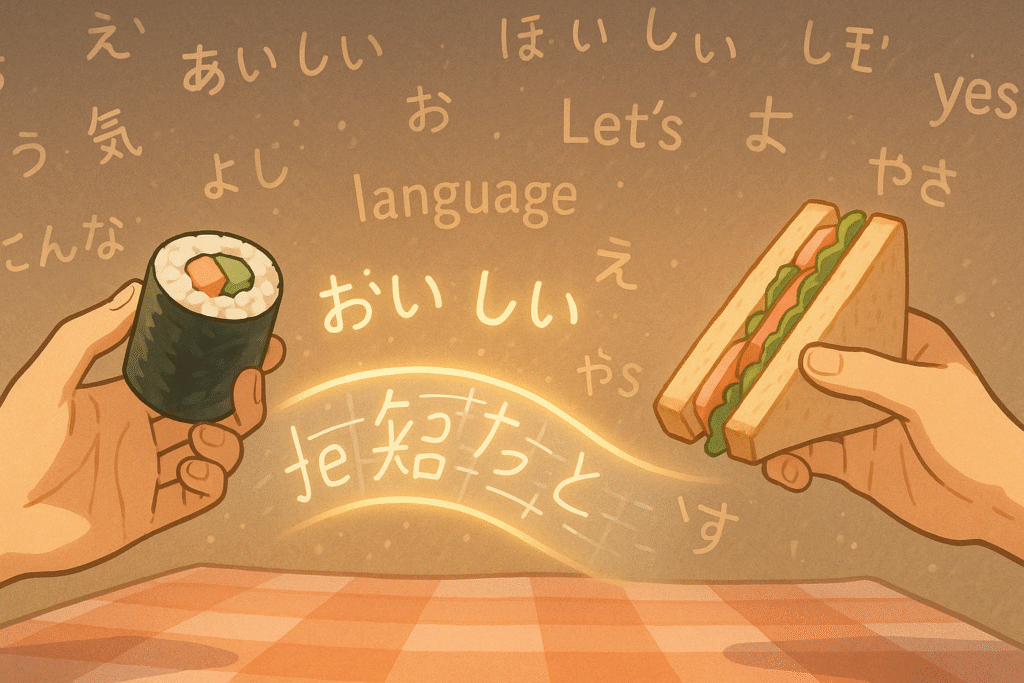Have you ever found yourself wondering about the connections between seemingly different languages? While English and Japanese might appear worlds apart at first glance, these two global languages share some fascinating similarities that can make your language learning journey significantly smoother. From shared vocabulary to structural parallels, understanding these unexpected connections provides valuable insights for learners on both sides.
The Unexpected Bridges Between English and Japanese
When most people think of English and Japanese, they immediately focus on the differences. English uses the Latin alphabet, while Japanese employs three writing systems (kanji, hiragana, and katakana). The grammar, sentence structure, and pronunciation seem vastly different at first glance.
But here’s a delightful surprise: English and Japanese actually share several meaningful similarities! Whether you’re an English speaker exploring Japanese, or a Japanese learner working on your English, these shared features might make your language journey considerably easier.
Let’s explore 6 surprising ways English and Japanese are more alike than most people realize.
1. Abundant Shared Vocabulary Through Loanwords
If you’ve studied even basic Japanese, you’ve likely encountered words that sound remarkably familiar to English speakers.
This is because Japanese incorporates numerous English loanwords, called gairaigo (外来語), particularly in domains like technology, fashion, food, and popular culture.
Here are some recognizable examples:
- コンピューター (konpyūtā) – computer
- アイスクリーム (aisukurīmu) – ice cream
- バック (bakku) – bag or backpack
- テーブル (tēburu) – table
For English speakers learning Japanese, these borrowed words provide an excellent vocabulary foundation to build upon, much like how understanding the 1000 most common Japanese words can dramatically accelerate your learning progress, as we explored in our previous guide.
2. Clear Subject-Verb Structure (With Variations)
While Japanese and English follow different word orders—English uses Subject-Verb-Object (SVO) and Japanese uses Subject-Object-Verb (SOV)—both languages emphasize clearly identifying the subject and action in sentences.
Compare these examples:
- English: I eat sushi.
- Japanese: わたしはすしをたべます (Watashi wa sushi o tabemasu). → “I (topic) sushi (object) eat.”
Both sentences clearly communicate who is performing the action and what they’re doing—the information is simply arranged differently. Understanding these structural relationships is essential for effective communication in both languages.
Want to explore Japan’s culture?
Discover Japan’s rich culture, traditions, and hidden gems with our expertly crafted guides. Get insider tips on travel, food, and history. All for free!
3. Prepositions and Particles That Guide Meaning
In English, we use prepositions like “to,” “from,” or “at” to show relationships between elements in a sentence. Japanese accomplishes this with particles like へ (e) and に (ni).
For example:
- English: I go to school.
- Japanese: 学校へ行きます (Gakkō e ikimasu) – “School to go.”
These helper words function similarly to the Japanese transition words we discussed in our comprehensive guide, creating meaningful connections between ideas and elements within sentences.
4. Respect & Politeness Systems in Both Languages
Japanese is renowned for its elaborate levels of formality, but English also incorporates subtle politeness markers that serve similar functions.
Compare these examples:
- Direct English: “Give me the report.”
- Polite English: “Could you please give me the report?”
And in Japanese:
- Direct: レポートをください (Repōto o kudasai)
- Polite: レポートをいただけますか (Repōto o itadakemasu ka?)
Both languages adjust tone and vocabulary based on social context, and mastering when to use polite or casual speech represents a crucial skill for effective communication in either language.
5. Global Influence and Shared Pop Culture
Thanks to anime, K-pop, Hollywood, and digital connectivity, English and Japanese continuously borrow cultural and linguistic elements from each other.
You’ll frequently encounter:
- “NG” in Japanese media (from English “no good”)
- “Senpai” or “kawaii” in English-speaking fandoms
- Abbreviations like “LOL” or “BFF” appearing in Japanese online conversations
This cultural exchange creates natural bridges between the languages, making it easier for learners to connect with authentic usage in real-world contexts.
6. Approachable Pronunciation for Beginners
Japanese pronunciation follows highly consistent patterns once you understand the basic syllabic structure. While English has more exceptions, its pronunciation is still relatively accessible for beginners.
For instance:
- Japanese features a fixed set of syllables (such as ka-ki-ku-ke-ko)
- English generally follows predictable consonant-vowel patterns in foundational vocabulary
This phonetic consistency helps with speaking confidence and listening comprehension in both languages, especially when learning to read in Japanese, as we covered in our step-by-step guide.
Ready to Deepen Your Language Skills?
If you’ve found these connections between English and Japanese intriguing and want to continue your language learning journey, check out our comprehensive Learn Japanese page where you can access free guides to accelerate your progress.
Q&A About English and Japanese Similarities
Q: Are loanwords in Japanese pronounced the same as in English? A: Japanese loanwords follow Japanese phonetic patterns, so their pronunciation often differs from the original English.
Q: Does Japanese have articles like “a” and “the” in English? A: Japanese doesn’t have direct equivalents to English articles, using context and particles instead to indicate specificity.
Q: Can understanding English help with learning Japanese? A: Yes, recognizing the similarities between English and Japanese can create valuable learning shortcuts and increase confidence.
Q: How many English loanwords are used in modern Japanese? A: Modern Japanese incorporates thousands of English loanwords, particularly in technology, fashion, and popular culture.
Q: Do Japanese and English share any grammar rules? A: While the fundamental grammar structures differ, both languages share logical principles like subject-action relationships and contextual politeness.
English and Japanese share surprising similarities that can help bridge the gap between these seemingly different languages. By recognizing these connections, learners can build confidence and find shortcuts in their language journey.
Have you noticed any other interesting similarities between English and Japanese? Share your observations in the comments below!
I wrote this article focusing on the keyword “English and Japanese similarities” to provide value for language learners interested in understanding the connections between these two global languages. By highlighting these unexpected parallels, the content aims to make the language learning process more approachable and engaging for students on both sides of the linguistic divide.
Enhance Your Language Learning with Comprehensive Word Resources
Looking to further expand your English and Japanese vocabulary beyond the similarities we’ve explored? For a comprehensive resource of English words categorized by type, structure, and usage, visit WordsDetail.com. Their extensive collection includes everything from words organized by starting letters to specialized vocabulary lists for various contexts. Whether you’re strengthening your English to better understand Japanese loanwords or seeking to build your language foundation in either tongue, having access to organized word lists can significantly accelerate your learning process. Remember, recognizing patterns across languages becomes easier when you have a solid grasp of vocabulary fundamentals in both!
Love Japan? Stay in the Loop!
Get the best of Japan straight to your inbox: language, culture & travel insights!




